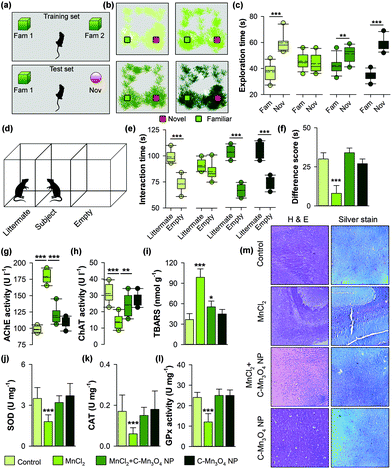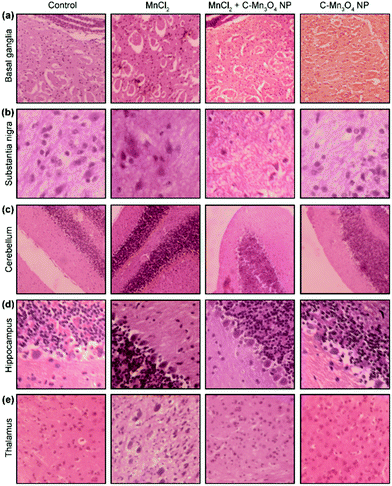 Open Access Article
Open Access ArticleCreative Commons Attribution 3.0 Unported Licence
Correction: Manganese neurotoxicity: nano-oxide compensates for ion-damage in mammals
Aniruddha
Adhikari
a,
Monojit
Das
b,
Susmita
Mondal
a,
Soumendra
Darbar
c,
Anjan Kumar
Das
d,
Siddhartha Sankar
Bhattacharya
b,
Debasish
Pal
b and
Samir
Kumar Pal
*ab
aDepartment of Chemical, Biological and Macromolecular Sciences, SN Bose National Centre for Basic Sciences, Block JD, Sector 3, Salt Lake, Kolkata-700106, India. E-mail: skpal@bose.res.in
bDepartment of Zoology, Uluberia College, University of Calcutta, Uluberia, Howrah 711315, India
cResearch & Development Division, Dey's Medical Stores (Mfg.) Ltd, 62, Bondel Road, Ballygunge, Kolkata-700019, India
dDepartment of Pathology, Calcutta National Medical College and Hospital, 32, Gorachand Rd, Beniapukur, Kolkata-700014, India
First published on 3rd August 2020
Abstract
Correction for ‘Manganese neurotoxicity: nano-oxide compensates for ion-damage in mammals’ by Aniruddha Adhikari et al., Biomater. Sci., 2019, 7, 4491–4502, DOI: 10.1039/C9BM01039D.
The authors regret that there were errors in Fig. 3 and ESI Fig. S2 in the original manuscript. The authors apologise for these errors and any consequent inconvenience to the readers.
The haematoxylin and eosin stained brain section of “Control” group in Fig. 3m was inadvertently duplicated as “C-Mn3O4 NP” group in Fig. 3m. The correct Fig. 3 is presented here.
The haematoxylin and eosin stained brain section (Basal ganglia) of “MnCl2 + C-Mn3O4 NP” group in ESI Fig. 2 was inadvertently duplicated as “C-Mn3O4 NP” group (Basal ganglia) in ESI Fig. 2. The correct ESI Fig. 2 is presented here.
The Royal Society of Chemistry apologises for these errors and any consequent inconvenience to authors and readers.
| This journal is © The Royal Society of Chemistry 2020 |


